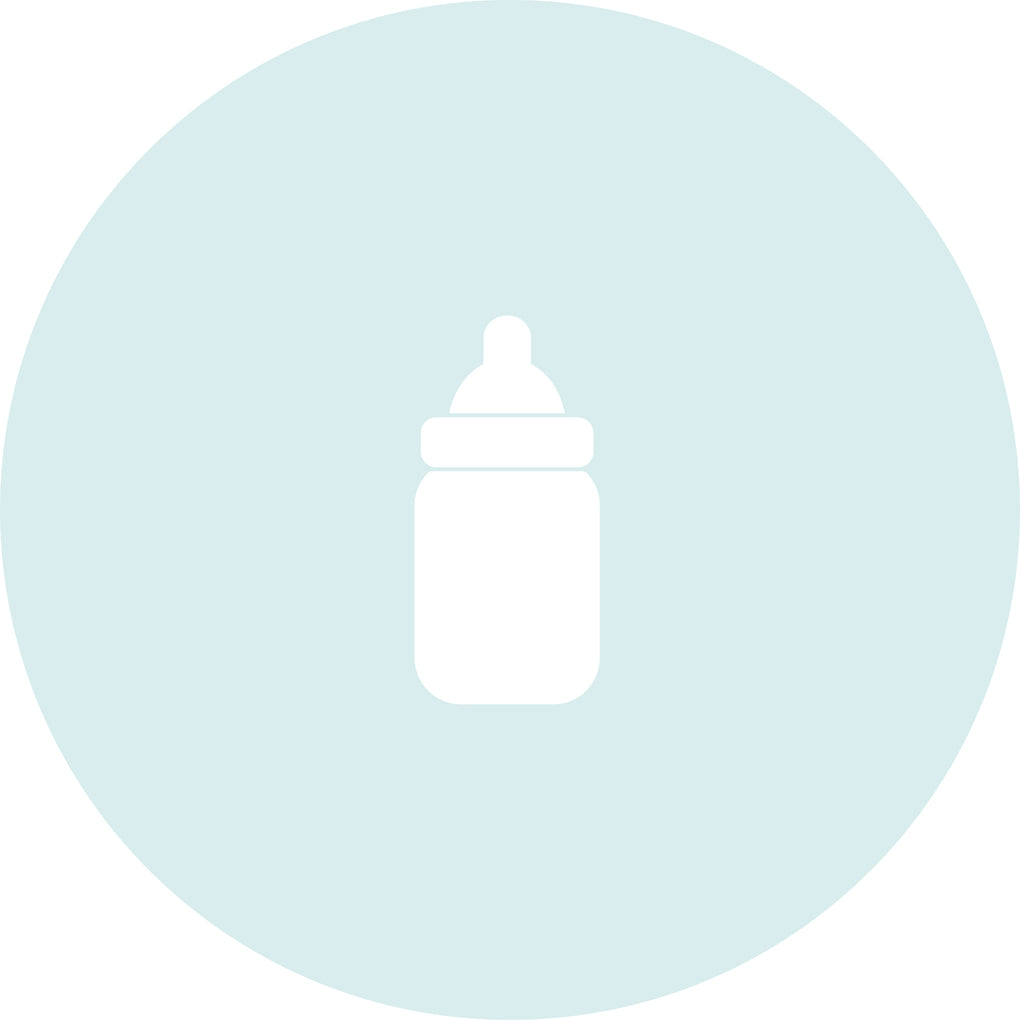Whilst breastfeeding is the most natural way to feed our babies, unfortunately it doesn’t always come naturally. Some women and their babies struggle with breastfeeding, and one of the most common reasons mothers stop nursing is the belief that they are not making enough milk.
In this article, lactation consultant, Stacey Zimmels, explains how milk production works, how you know your baby is getting enough milk, and tips to increase milk production if you have a low milk supply.
Establishing and Maintaining Milk Supply
In the first few days of your baby’s life, breast milk production is hormonally-driven. After birth and the delivery of the placenta, the hormone progesterone rapidly falls, leading to a surge in the hormone prolactin which drives milk production.
During this period, you are producing colostrum — your baby’s first milk. Typically, between days 2 and 4 of your baby’s life, your colostrum transitions into mature milk. At this stage, breast milk production changes from being hormonally-determined to being predominantly driven by a supply and demand process (with some hormonal help, too).
Your baby suckling on the breast effectively and frequently will send feedback to the breasts to produce more milk. Put simply: the more you feed and the more milk your baby takes, the easier it is to stimulate breast milk supply — as long as your baby is feeding well, you should produce enough milk.
The most objective way to know that your baby is feeding well and that you are making enough milk for your baby is by ensuring that your baby is producing the right number of wet and dirty nappies for their age, and is gaining weight as expected.
Why is My Breast Milk Supply Low?
There are two categories of low breast milk supply. The first, known as primary low milk supply, can be caused by various maternal conditions such as diabetes, insufficient glandular tissue (IGT) (also known as hypoplastic breasts), breast surgery, or injury.
Low breast milk production can also occur due to labour and delivery issues such as a retained placenta or extreme blood loss. These reasons for low milk supply are less common, and some are very rare. The vast majority of women are able to physically produce enough milk for their infants.
The more common cause of low breast milk supply is infrequent or inefficient breastfeeding (or both together). In this situation, a woman is able to produce breast milk but doesn’t make enough because either they aren’t feeding often enough or the baby isn’t feeding well.
Factors that may impact breast milk supply in this circumstance can include use of a pacifier in the early days — this can affect breast milk supply by masking a baby’s feeding cues. Additionally, feeding to a schedule (e.g. 3 hourly feeds), sleep training, or only offering one breast per feed can also be a cause of your low breast milk supply.
Thinking that your breast milk supply is low — usually because your baby is cluster feeding or unsettled — can lead to supplementing with formula and this can, in turn, reduce the frequency of breastfeeding and result in a lower milk supply.
Am I Producing Enough Breast Milk?
The following are NOT signs of low milk supply, assuming that your baby is gaining weight and making enough wet and dirty nappies. However, they cause many women to think their break milk production is reduced or decreasing.
- Breasts softening or leaking less or stopping entirely. This is quite normal from around 6 weeks postpartum.
- Baby will drink milk from a bottle after breastfeeding. The assumption here is that your baby is still hungry, when in fact they have a natural suck reflex which means they will suck (and swallow) regardless of whether they want more milk.
- Baby is cluster feeding. They may take milk from both breasts and then settle for a short time, only before starting to root again for more milk. This is a normal phenomenon in infant feeding and can happen daily, sometimes for a period of hours at a time. If your baby also has periods of being settled in between some feeds, then you need not be concerned.
- Baby is unsettled and won’t be put down after a feed. Babies can be unsettled for lots of reasons and want to remain in your arms. It isn’t always hunger, even if they are soothed by nursing.
- Frequent night waking even after the early weeks and months.
- You don’t produce much milk when pumping or hand expressing. Pumping is not an accurate indicator of milk supply.
- Your baby is feeding frequently.
If your baby is inefficient at breastfeeding, this may also affect milk supply. The most common causes of inefficient breastfeeding include sleepy newborns who don’t wake or stay awake enough for feeding, tongue tie, or issues with positioning and attachment at the breast. These challenges can feel incredibly hard in those exhausting early days, however support is out there. Working through troublesome breastfeeding periods with a qualified breastfeeding professional can improve the way your baby feeds and increase milk supply.
How To Increase Breast Milk Supply
Identifying the cause of your low breast milk supply is the starting point to help to increase milk supply. When working on increasing supply, it is also important to ensure your baby is being fed enough milk.
It may be suggested that you begin expressing or pumping your breast milk in addition to breastfeeding and that any extra milk that you produce is given to your baby. This can be done in a number of ways, including by paced bottle feeding or using a supplemental nursing system.
If you don’t have enough breast milk then you may need to use donor breast milk or formula to top up. A plan such as this, which includes three elements — nursing, pumping, and topping your baby up — is known as triple feeding. Triple feeding plans should only be a short-term intervention, as they are not sustainable for parents over a long period of time.
A combination of the following suggestions can be implemented to help increase milk supply:
If your baby is going to the breast:
- Increase the frequency of when your baby nurses. Offer the breast more often, including during the night.
- Practise responsive breastfeeding (respond to your baby’s cues as well as your own desire to feed).
- Offer both breasts at each feed.
- If you need to top up at the end of a nursing session, then use an at-breast supplementer rather than a bottle.
- Switch feed – move from one breast to the next and then back to the starting breast as much as needed.
- Have plenty of skin-to-skin contact outside of nursing times.
If you are pumping in addition to nursing or exclusively pumping:
- Have plenty of skin-to-skin contact before pumping.
- Increase the frequency of pumping sessions.
- Pump from both breasts at the same time (double pumping).
- Check the strength of your pump; to stimulate or increase milk supply, a hospital-grade breast pump is recommended.
- Ensure the pumping shield is the correct fit. It’s important to know the size of your nipple to understand which breast shield will fit you best. Elvie's nipple sizing tool will help you find your recommended fit.
- Gently massage the breasts, including nipple stimulation, before pumping.
- Use the hands-on expressing technique when pumping, including hand expressing.
- Try power pumping (a technique that’s designed to mimic cluster feeding).
In addition to all of the above, some women may also benefit from taking galactagogues. Galactagogues are substances that can help to promote lactation. Commonly recommended galactagogues include Fenugreek and Goat's Rue (herbal) and Domperidone (medical). These should not be taken without consultation with an appropriate physician or herbalist.
Foods with galactagogue properties are often cited to help increase milk supply. There is no strong evidence that these work; however, if you are doing all of the above and want to eat certain foods alongside, then there is no harm in doing this.
Additional Support for Milk Supply Issues
If you have concerns that you may have low milk supply and need advice on how to increase breast milk supply, then early, qualified professional lactation and breastfeeding support would be recommended. Find a local lactation consultant who will carry out a comprehensive lactation history and observe your baby breastfeeding.
Once they ascertain the likely reason for the low milk supply, they will develop an individualised short-term plan to support your lactation and your baby’s feeding which can be reviewed at regular intervals.
Before the birth of your child, you can attend antenatal classes at a Children’s Centre and learn how to take care of and feed your baby, get advice on your pregnancy and chat with professionals. Here’s how to find the closest Children’s Centre to you.
The NHS offers a lot of resources on breastfeeding: NHS Bot Start4Life Breastfeeding Friend will reply to your questions through Facebook Messenger, Google Home or Amazon Alexa.
You can also find support at Baby Café, a network of breastfeeding locations where you can get advice on breastfeeding from health professionals, practitioners and breastfeeding counsellors. You don’t need an appointment and can join the groups during opening hours. Check out their website to find your closest one.


























